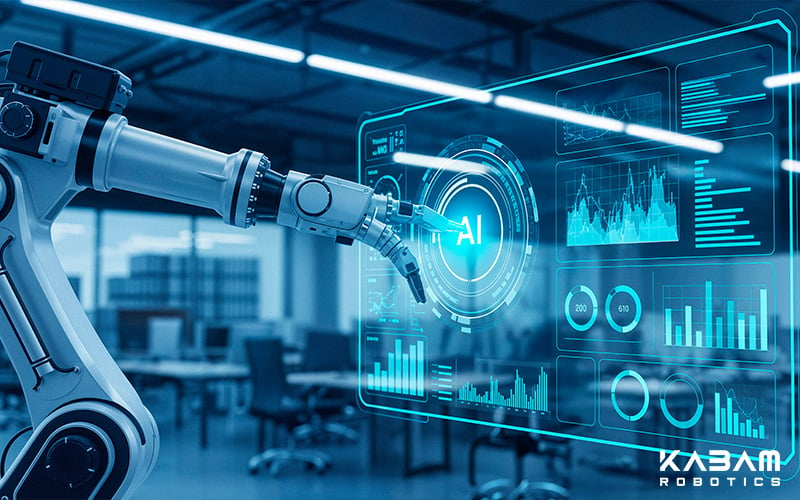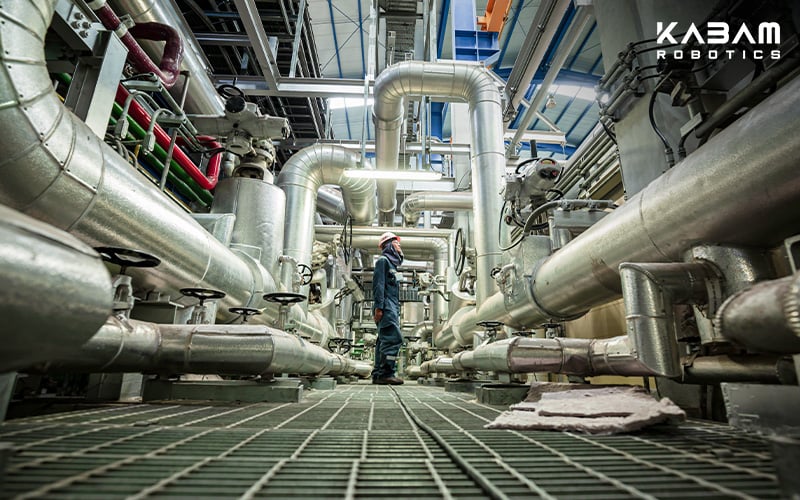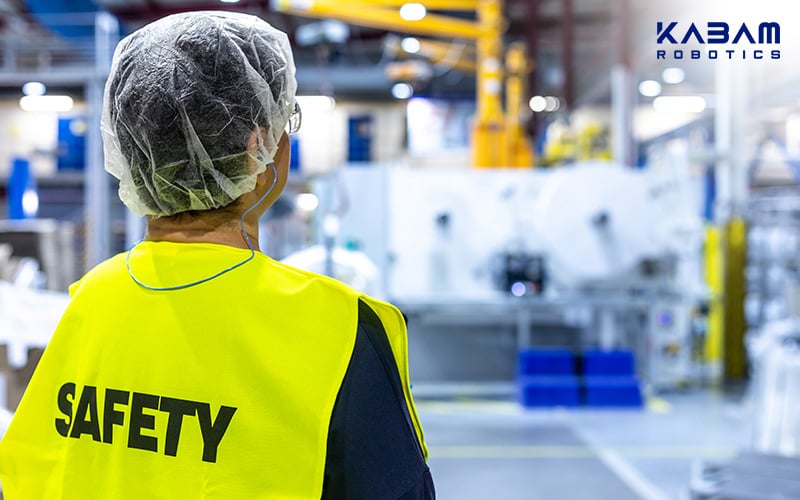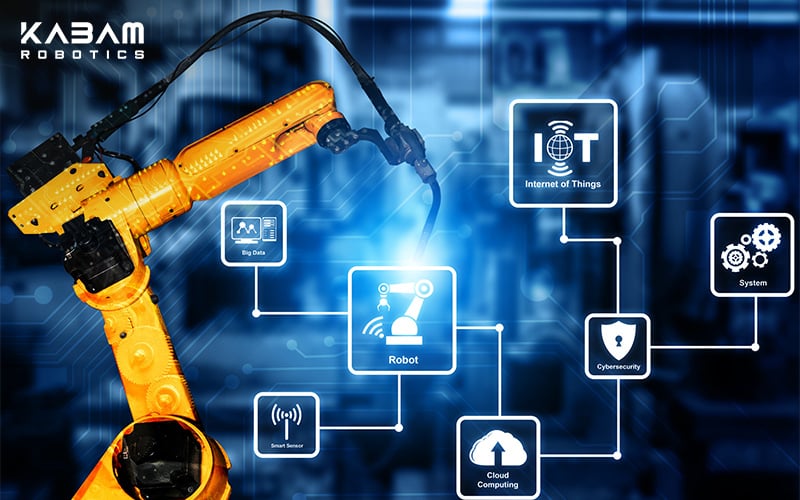
The integration of the Internet of Things (IoT) into robotics is radically transforming industries by enhancing efficiency and connectivity. By embedding sensors, software, and network connectivity into physical devices, IoT-enabled robots are designed to communicate seamlessly, process real-time data, and make informed decisions autonomously. This synergy is particularly beneficial in corporate and commercial office buildings, as well as sectors like hospitality, where responsive and intelligent automation is paramount to creating a smart building security system. In this article, we will explore the critical role of IoT in robotics and the improvements brought about as a result.
What is IoT?
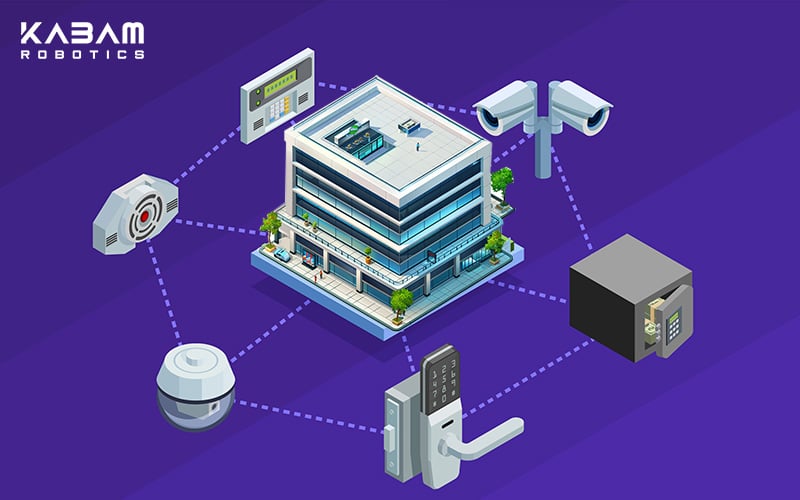
The Internet of Things (IoT) refers to a network of physical devices embedded with sensors, software, and technologies that facilitate data exchange over the internet. These interconnected devices collect and share data, enabling automation and intelligent decision-making across various applications.
How IoT Supports Robotics
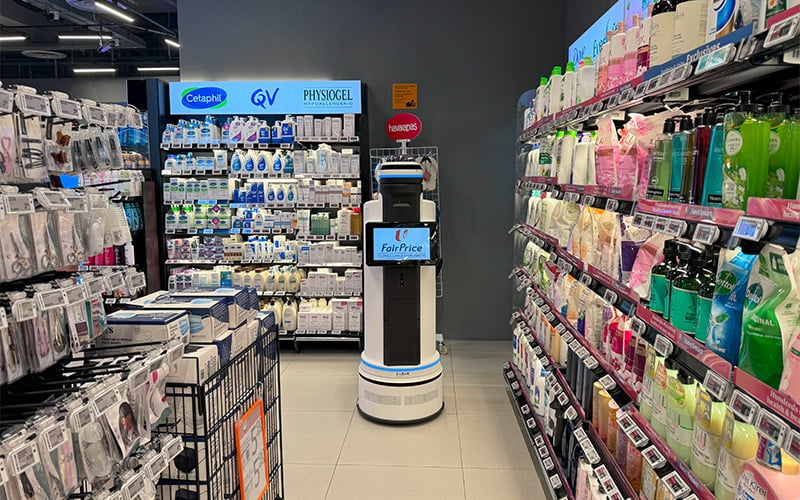
The integration of IoT in robotics enhances the capabilities of robotic systems in several key ways:
1. Enhanced Communication and Coordination:
Robots and IoT-enabled systems share real-time data, ensuring seamless collaboration in dynamic environments. In smart warehouses for instance, autonomous mobile robots (AMRs) are equipped with sensors and IoT connectivity to navigate the facility and transport goods. As the AMRs move through the warehouse, they continuously gather data on their surroundings, such as obstacles, inventory levels, and changes in environmental conditions. This data is shared in real-time with the IoT-enabled warehouse management system (WMS), which processes the information and updates the system accordingly.
2. Automation and Efficiency:
IoT streamlines robotic processes by reducing the need for manual intervention. Automated systems can monitor environmental conditions and adjust operations accordingly, optimizing workflows and increasing productivity.
3. Data-Driven Decision Making:
IoT sensors collect and analyze data, enabling robots to adapt to environmental changes. This is often seen in large office buildings that deploy autonomous cleaning robots that use sensors to detect high-traffic areas or specific zones with more dust or dirt. Based on this data, the robot adjusts its cleaning schedule, increasing cleaning frequency in high-traffic areas and reducing energy usage in less-used zones. This adaptive approach ensures that the robot optimizes its operations, saving time and resources while maintaining cleanliness throughout the building, all without requiring constant human intervention.
4. Predictive Maintenance and Self-Diagnostics:
IoT integration in robots enhances predictive maintenance by monitoring key components in real time. Sensors detect performance issues, allowing robots to predict potential failures and schedule proactive maintenance. This reduces downtime, extends lifespan, and optimises efficiency. Additionally, self-diagnostics enable robots to autonomously address minor faults, further improving reliability.
Co-Lab Examples: How IoT Enhances Robotics in Hospitality
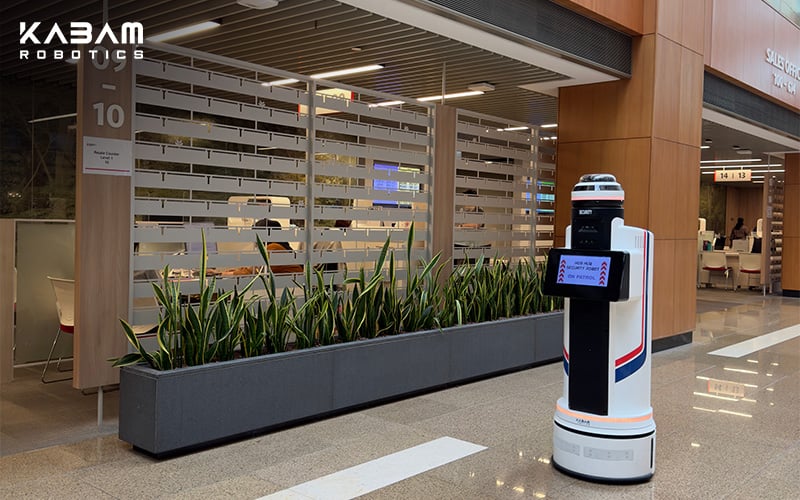
In the hospitality industry, IoT in robotics has helped enhance guest experiences and operational efficiency. KABAM Robotics’ Co-Lab, which is one of the best security robots for indoor purposes, exemplifies this integration:
1. Smart Environmental Control for Guest Comfort:
Co-Lab adjusts room conditions such as temperature, lighting, and air quality based on occupancy and guest preferences. Sensors detect environmental changes and communicate with the robot to make real-time adjustments, ensuring optimal comfort.
2. Seamless Communication Between Hotel Service Robots:
A delivery robot can collect dirty cutlery from hotel rooms after in-room dining. The robot is triggered when a guest uses the in-room tablet to request cutlery collection. Upon receiving the request, the robot navigates to the room, collects the dirty cutlery, and returns it to a designated area. The hotel’s POS system is updated to reflect the collection, streamlining the process and reducing labor costs. This contactless service enhances the guest experience.
3. Security and Surveillance in Hotels:
IoT-powered security robot applications can monitor guest floors 24/7, detecting unusual activity through sensors and cameras. If a potential security threat is identified, the robot immediately alerts staff, allowing for a quick response. This proactive monitoring enhances guest safety and ensures a secure, worry-free environment.
Applications in Security
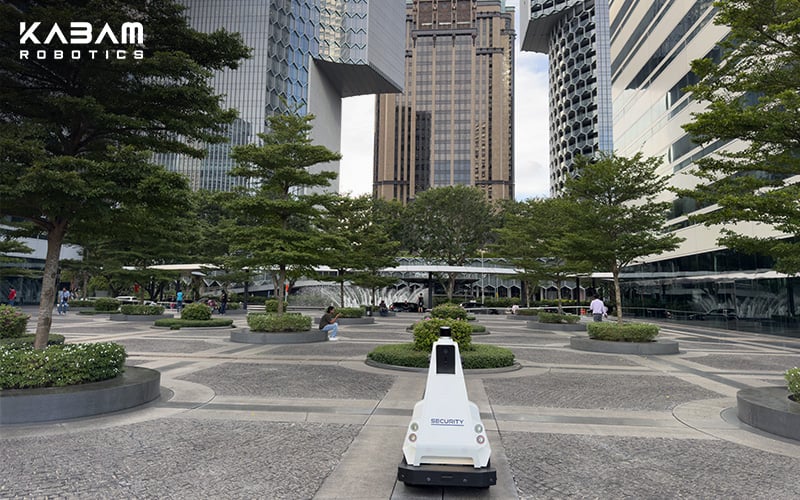
IoT in robotics is transforming security operations by providing autonomous surveillance and rapid response capabilities:
-
Autonomous Security Systems:
IoT in robotics enhances security operations by enabling autonomous security systems to perform continuous surveillance and real-time threat detection. Equipped with sensors like cameras and motion detectors, robots autonomously collect data, analyze it, and take action, such as alerting security personnel or navigating to a threat. IoT allows seamless communication between robots, enabling coordinated responses across large areas. These robots also integrate with other security systems, such as alarms and access control, to provide comprehensive coverage. Through predictive maintenance, IoT ensures robots stay operational, minimizing downtime and ensuring reliable security monitoring 24/7.
-
Integration with Smart Building Security Systems:
IoT in robotics enhances security operations by enabling robots to integrate with smart building security systems. This integration allows robots to communicate seamlessly with existing infrastructure, such as surveillance cameras, alarms, and access control systems. Robots can autonomously monitor areas, detect anomalies, and respond to security threats in real time. By sharing data with other devices, such as lighting or locks, IoT enables a coordinated security approach. Additionally, IoT allows robots to adjust their behavior based on environmental changes, ensuring optimal performance, improving threat detection, and enhancing overall security in smart buildings.
As a leading robotics company in Singapore, KABAM Robotics specializes in developing IoT-enabled robotic platforms that enhance operational efficiency and security. Our solutions, such as Co-Lab and Halo, are designed to seamlessly integrate with existing systems, including surveillance cameras, access control systems, building management systems (BMS), and elevator control systems to name a few, providing smart automation and real-time data communication sharing.
One of the biggest challenges businesses face is that these security systems work in silos, preventing them from communicating or sharing data with other systems, leading to inefficiencies, delays, and missed opportunities for optimization. When security, facility management, and other operational systems function in isolation, there is a lack of coordination, which can result in fragmented decision-making, increased costs, and potential security vulnerabilities.
In an attempt to unify these systems, KABAM Robotics collaborated with a major hotel in Singapore to deploy IoT-integrated service robots. These robots autonomously navigated the hotel’s premises, performing tasks like security patrols. The integration of IoT allowed for real-time coordination with the hotel’s management system, resulting in improved service efficiency and enhanced guest satisfaction.
By leveraging IoT in robotics, KABAM Robotics delivers cutting-edge solutions that address the unique challenges of various industries. We are committed to providing clients with integrated, unified systems that break away from the inefficiencies of conventional silos. By offering solutions like the Smart+ platform, KABAM ensures that robots, security systems, and building infrastructure work seamlessly together, sharing data in real-time. This allows our clients to benefit from increased automation, improved connectivity, and data-driven decision-making.
For more information on our services, please contact us today.

